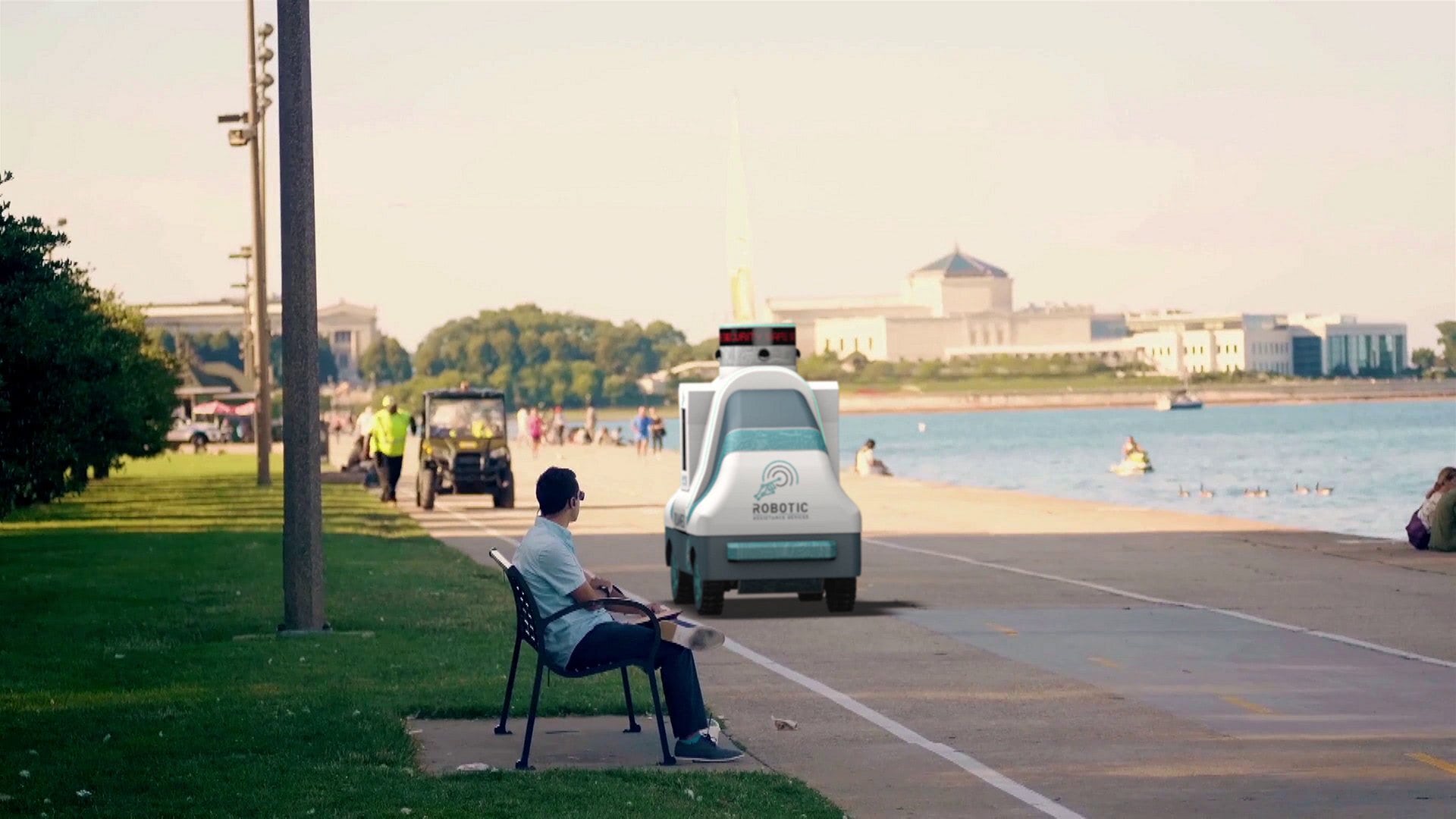Business Development | Risk
“Robots with a Purpose” : An Interview With the founder of RAD Robotic Assistance Devices

There are so many cutting edge innovations happening in the physical security world right now. Often our customers express interest in some of the leading-edge technology being developed to keep their businesses safe and secure.
In our first interview, we spoke to the founder of Robotic Assistance Devices (RAD), a maker of robotic security devices. Their devices range from the wall-mounted Wally (which can screen visitors for masks and take temperatures) to ROSA, an autonomous 180-degree camera and one-way communications device, to the wheeled, roving ROAMEO. We asked RAD founder and CEO Steve Reinharz and RAD’s vice president for security & industry, Mark Folmer, why robots are good for the security industry, helpful to human guards, and what’s next for AI in the physical security industry.
Circadian Risk: Can you give a brief overview of your company and your products?
Mark: We build robots with a purpose. Robotic Assistance Devices’ mission is to deliver artificial intelligence-based solutions that empower organizations to solve complex challenges while delivering immediate return on investment. Our company was founded on the belief that next-generation solutions can help streamline operations, increase ROI and strengthen all organizations, large and small. We’ve been around for a little more than 4 years and we were founded by Steve Reinharz, who comes from the security integration space.
Our products provide automated response to a lot of security challenges that are out there today. Traditionally those responses are human driven. The idea came about to build security specific robots at the intersection of the security integrations space and the security guarding space. As we all know, it's becoming tougher and tougher to hire and train and motivate and pay and bill security officers, so opportunities to bring devices into the industry is beneficial for the security service industry.
Steve: We have the greatest mobile security concierge robot along with a suite of stationary devices unmatched by any competitor. Our product offering is wildly deep and wide because that’s what our clients want from us.
Related content: Are There Alternatives to Having Security Guards?
Circadian Risk: What are the advantages of using robots over humans in physical security?
Mark: If you think about a lot of what security officers are asked to do, it can often be repetitive and mundane tasks. The more repetitive and the more mundane the task is, the less likely it is to be done right over time. The advantages of RAD devices is the autonomous response.
Another one of the things that we challenge when we talk about the automated remote service industry is what actually needs to be on site vs what can be remote. And with that in mind, we've pushed a lot of the first responses to some sort of autonomous response, and then to some sort of remote response. So the autonomous device responds first, and then you’re connected to a human remotely.
One more thing is that robots can be programmed to be unbiased in how they respond. It doesn’t matter how many people approach them — the RAD is always going to respond the same way. And, they’re helpful for confrontation. For example, if you're aggressively told by someone to wear a mask, you might react in an angry way, but if a machine tells you to do it, you're much more likely to comply. And of course robots can be less expensive, especially in a human resource-intensive sector like security services.
Circadian Risk: How can your devices be best used?
Mark: Our devices are always best used as part of a plan. You can’t expect a device that’s fixed on a wall, like our device Wally, to run after somebody or administer first aid. It’s important to have a proper risk assessment and role evaluations so you know where you need devices as opposed to humans.
For example, an organization might use our devices in situations where staff safety is an issue, or when mundane, repeated actions are required. Our devices are also helpful in places that are hard to staff — in places across the country it can be hard to staff certain sites and roles.
Conversely, in places where staffing is too high for compliance or other reasons, our devices can keep costs down by performing some tasks that don’t need to be performed by a human.
Circadian Risk: Is there a risk to using robots over humans?
Mark: If we turn that around, is there a risk to using humans over robots? Think about the safety aspect. A device is non confrontational. The worst thing that can happen to our ROAMEO, which is our newly-launched mobile unit, is someone's going to kick it or try to vandalize it or push it over. If someone wants to interact with a human who just told them something they don't want to hear, the consequences can be much more severe.
Circadian Risk: Is there a fear that RAD might put human guards out of a job?
Mark: Robots are not going to take everyone's role in the security service space. To me, what robots allow security professionals to do is to hire better people with different skills and training to do more involved tasks. The choice is not between a camera or an access control system or a guard. Instead, choose the piece that makes the most sense for a specific task and optimize all the pieces around it.
Circadian Risk: What do people often misunderstand about your products?
Mark: That we think that all human deployments are bad. We definitely are not sitting here saying "'tomorrow morning we're going to get rid of 100% of your security guard force".
And the other misunderstanding or misconceptions is coming from the industry itself; this mentality that the only way of doing things is the way we've done it year over year and not taking advantage of technology.
Related content: Ask the Expert: How Can I Improve the Performance of My Security Force?
Circadian Risk: What technology is missing today or if improved would help RAD?
Steve: 5G. Faster and more stable cellular will improve our operations. Besides faster connectivity to the cloud for analytics processing it will allow true remote drive-by-internet capability. Game changer.
Circadian Risk: Steve, how did your previous experiences help you build RAD?
Steve: My first ‘real’ business was the creation and sale of my first AI book at 19 years old. I borrowed money from the government, needed an editing team, a printer, needed to create sales materials, target a market and sell the books. First big mistake too! I rushed the first print run and had to scrap the entire run. I ended up making $1,000 for the entire summer’s work after $5k sales. Worst earnings summer ever. But I loved every second of it and learned so much.
From there I opened a security integration company at 23 years old in Los Angeles. Started by selling CCTV/access in south central LA. My inexperience worked to my advantage as I was completely clueless outside the core concept of absolutely needing to succeed. Built the company to 30 employees and became SoCal’s premier integrator specializing in Correctional Facilities. By the time I was 30 years old I was a big financial success. Moving ahead after another regrouping, I was fortunate to be part of a team that sold an integrator to Securitas. Received awards from the city of Los Angeles that year, had great earn out from the sale.
At 44 years old I worked with graphics processing giant Nvidia on AI based human detection. During this time I decided to risk it all and create an innovative security robot. A few stumbles and even more successes lead me onto the path where Robotic Assistance Devices now firmly operates.
Fast forward to present day... RAD is well-funded, staffed with world-class talent, and the good news is, we’re just getting going.
What technology would you like to see spotlighted on our blog? Email us and let us know.




